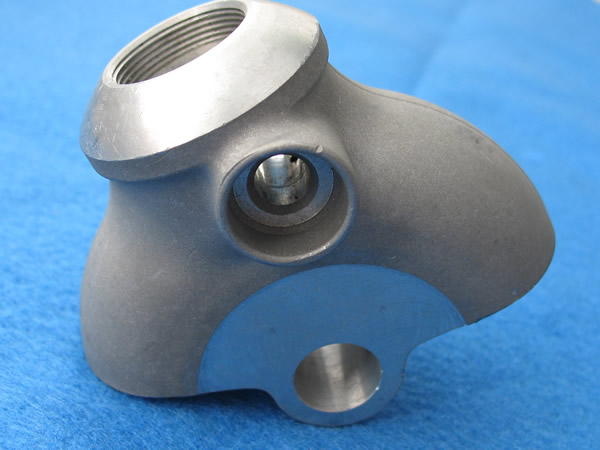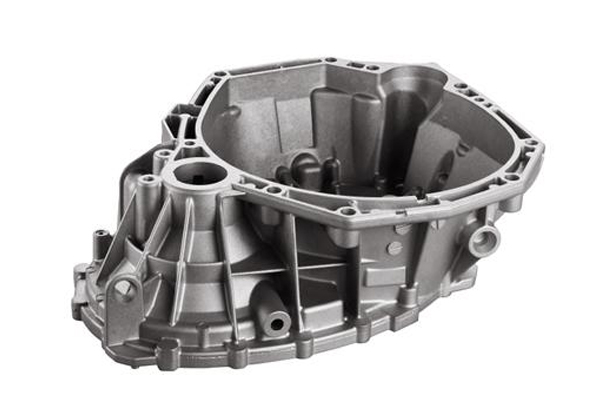The most common FAQs about Aluminum Casting
Every little thing You Need to Find Out About the Uses and Advantages of Aluminum Castings
Aluminum castings play a vital duty throughout different markets, offering distinct buildings that boost item efficiency. Their lightweight nature and toughness make them excellent for applications in automotive and aerospace markets. In addition, the adaptability of casting techniques allows for complex layouts and limited tolerances. As the need for lasting options rises, understanding the advantages and applications of aluminum castings becomes significantly essential. What specific benefits do they use over various other products?
Review of Aluminum Casting Processes
Aluminum casting procedures encompass a range of methods utilized to shape molten aluminum into wanted types. These techniques consist of sand spreading, die spreading, and investment spreading, each offering distinct benefits depending on the application (Aluminum Casting). Sand spreading includes creating a mold from sand, permitting detailed styles and large parts, while die spreading uses high pressure to inject liquified aluminum into metal mold and mildews, making sure precision and smooth surfaces. Investment spreading, additionally referred to as lost-wax spreading, creates intricate shapes with exceptional dimensional accuracy, making it ideal for in-depth elements
These procedures are defined by their capability to produce light-weight, sturdy parts that exhibit superb rust resistance. The convenience of aluminum enables for modification in various markets, from automotive to aerospace. Additionally, the capability to reuse aluminum enhances the sustainability of these casting procedures, decreasing ecological impact while keeping product integrity. Recognizing these techniques is important for maximizing manufacturing effectiveness and attaining high-quality aluminum castings.
Secret Applications of Aluminum Castings
Aluminum castings play an essential role throughout numerous markets, particularly in auto, aerospace, and consumer electronics. In the automotive market, they add to lightweight structures that improve fuel performance. Aerospace elements benefit from aluminum's strength-to-weight proportion, while customer electronics utilize its adaptability for reliable production.
Automotive Market Applications
As the vehicle sector remains to advance, manufacturers increasingly depend on aluminum castings for their lightweight yet resilient residential or commercial properties. These castings play an important duty in enhancing lorry performance, gas efficiency, and total safety and security. Secret applications include engine blocks, transmission real estates, and architectural parts, which gain from aluminum's superb strength-to-weight ratio. Furthermore, aluminum castings promote complicated geometries, enabling innovative layouts that enhance aerodynamics and lower drag. The deterioration resistance of aluminum likewise adds to durability, lowering maintenance prices for both producers and customers. As electric vehicles gain appeal, aluminum castings are essential for battery units and other elements, even more strengthening their value in the future of automotive production.
Aerospace Element Manufacturing
In the aerospace sector, aluminum castings are integral to the manufacturing of lightweight, high-performance components. These castings are vital for making components such as engine housings, structural frameworks, and touchdown equipment components, where weight reduction is vital for fuel efficiency and total performance. The exceptional strength-to-weight ratio of aluminum enables the development of complex geometries that improve aerodynamics. In addition, aluminum's resistance to rust adds to the longevity and integrity of aerospace parts, making certain safety in trip procedures. The spreading process additionally allows for accurate resistances, which is very important in meeting strict aerospace market criteria. Generally, aluminum castings play a pivotal duty in progressing aerospace innovation while sustaining the sector's promote sustainable practices.
Customer Electronic Devices Production
Using aluminum castings in consumer electronics production has become progressively substantial due to their lightweight and durable buildings. Manufacturers leverage these castings to develop parts for numerous devices, consisting of smartphones, laptops, and pc gaming consoles. Aluminum's superb thermal conductivity also assists in warmth dissipation, improving device efficiency and long life. The flexibility of aluminum permits for intricate layouts and complicated geometries, allowing sleek and modern-day aesthetics that appeal to consumers. In addition, aluminum castings can be quickly recycled, lining up with the growing demand for sustainable manufacturing practices. As modern technology developments, the role of aluminum castings in creating ingenious and efficient customer electronic devices is expected to broaden, making them a staple in the sector.

Benefits of Utilizing Aluminum Castings
While various products are available for spreading, aluminum stands apart because of its distinct combination of light-weight homes, strength, and rust resistance. The low density of aluminum makes it an optimal option for applications where weight decrease is vital, such as in the vehicle and aerospace markets. Its excellent strength-to-weight ratio permits suppliers to develop durable parts without including excessive weight.
Furthermore, aluminum castings can be generated with complex styles and tight tolerances, enabling intricate geometries that are difficult to attain with other materials. The convenience of aluminum permits for various casting methods, consisting of sand, pass away, and financial investment spreading, satisfying diverse production needs. Additionally, aluminum's simplicity of machining and finishing improves its charm, facilitating the production of high-quality surface coatings. Overall, the advantages of utilizing aluminum castings add to boosted efficiency and performance in countless applications across various fields.
Rust Resistance in Aluminum Castings

Natural Oxide Layer
An all-natural oxide layer kinds on the surface area of aluminum castings, supplying an essential obstacle versus environmental factors that can result in deterioration. This thin, protective movie is a result of the aluminum's reaction with oxygen in the air, properly securing the underlying metal from wetness, chemicals, and contaminants. Because of this, aluminum castings display outstanding deterioration resistance, which boosts their longevity and resilience in numerous applications. The oxide layer is not only helpful for protection however additionally contributes to aesthetic top qualities, as it can create a matte coating that many industries like. Furthermore, this all-natural procedure minimizes the requirement for additional coverings, making aluminum castings a cost-efficient option for suppliers looking for reliable, resilient materials.
Alloy Variations Influence
The make-up of aluminum alloys substantially influences their deterioration resistance residential properties in castings. Various alloy variants, such as 1xxx, 2xxx, and 6xxx series, display distinctive levels of susceptibility to corrosion. For circumstances, 1xxx alloys, mostly composed of pure aluminum, offer excellent deterioration resistance as a result of their high pureness. In contrast, 2xxx alloys, which have copper, might experience considerable corrosion when exposed to harsh environments. Meanwhile, 6xxx alloys, including magnesium and silicon, strike an equilibrium in between stamina and resistance. The presence of alloying components can enhance or decrease safety oxide layers, eventually affecting long life and performance. Understanding these variants is important for selecting the appropriate Go Here alloy for details applications where corrosion resistance is essential.
Layout Adaptability and Customization
Different products exist for casting applications, aluminum stands out due to its amazing design versatility and potential for modification. This convenience enables designers and designers to produce detailed forms and kinds that meet details useful demands. Aluminum Casting. The low density of aluminum allows light-weight designs, which is specifically valuable in sectors such as auto and aerospace, where weight reduction is vital
Aluminum castings can be customized to numerous specifications, consisting of wall density, surface area coating, and dimensional resistances. This versatility not just improves the visual appeal but also boosts the performance of the end product. Additionally, advanced methods such as 3D printing and computer-aided layout (CAD) further facilitate the customization procedure, enabling rapid prototyping and minimizing lead times. Aluminum castings can properly fulfill the diverse demands of different markets while supplying producers the capacity to innovate and react swiftly to market needs.
Contrast With Various Other Casting Products
While different casting materials each have their distinct advantages, aluminum regularly shows exceptional residential properties that make it a favored option in many applications. Contrasted to iron and steel, aluminum is substantially lighter, which lowers the overall weight of completed items, enhancing gas effectiveness in vehicle and aerospace industries. Aluminum supplies excellent corrosion resistance, needing much less upkeep over time contrasted to products like iron, which can rust.
When compared with plastics, aluminum's toughness and durability exceed numerous artificial options, making it appropriate for demanding settings. On top of that, aluminum's thermal and electrical conductivity is incredibly greater than a lot of other metals, making it optimal for applications needing effective warm dissipation or electric parts.

Future Patterns in Aluminum Casting Technology
Advancements in aluminum casting innovation are readied to redefine its applications throughout various sectors. Developments in automation and robotics are streamlining production processes, improving effectiveness and accuracy. The assimilation of expert system and maker understanding makes it possible for real-time surveillance and anticipating upkeep, lowering downtime and improving quality control.
Moreover, the advancement of advanced alloys is expanding the performance abilities of aluminum castings, making them suitable for even more requiring applications, especially in auto and aerospace markets. Lasting methods are additionally obtaining grip, with increased emphasis on hop over to here recycling aluminum and lowering carbon impacts throughout production.
Additive production strategies, such as 3D printing, are being checked out to produce complicated geometries that standard approaches can not attain, enabling for better layout adaptability. These fads suggest a future where aluminum casting will not only meet however surpass market expectations, driving technology and sustainability in production.
Often Asked Concerns
Exactly How Are Aluminum Castings Recycled After Usage?
Aluminum castings are typically accumulated, cleaned, and refined in recycling centers. The material is melted down, fine-tuned, and after that changed into brand-new items, thus preserving resources and decreasing ecological impact while preserving aluminum's preferable homes.
What Are the Common Expenses Connected With Aluminum Castings?
The regular expenses connected with aluminum castings vary based on variables such as intricacy, quantity, and material specifications. Generally, prices range from a couple of bucks per pound to considerably higher amounts for detailed browse around these guys layouts and large quantities.
Just How Do Aluminum Castings Contrast in Weight to Steel Castings?
Aluminum castings weigh considerably much less than steel castings, commonly around one-third the weight (Aluminum Casting). This decreased mass permits simpler handling, transport, and application in numerous sectors, contributing to enhanced performance in style and production procedures
What Industries Largely Rely on Aluminum Castings?
Different sectors greatly count on aluminum castings, consisting of automobile, aerospace, electronics, and consumer items. Their lightweight nature, rust resistance, and versatility make them essential for making parts in these markets, improving efficiency and performance.
Exist Any Type Of Wellness Risks Connected With Aluminum Casting Processes?
Health dangers related to aluminum casting procedures consist of direct exposure to fumes, dust, and chemicals, which can cause respiratory system problems and skin irritability. Correct precaution and tools are necessary to reduce these potential hazards in the workplace.